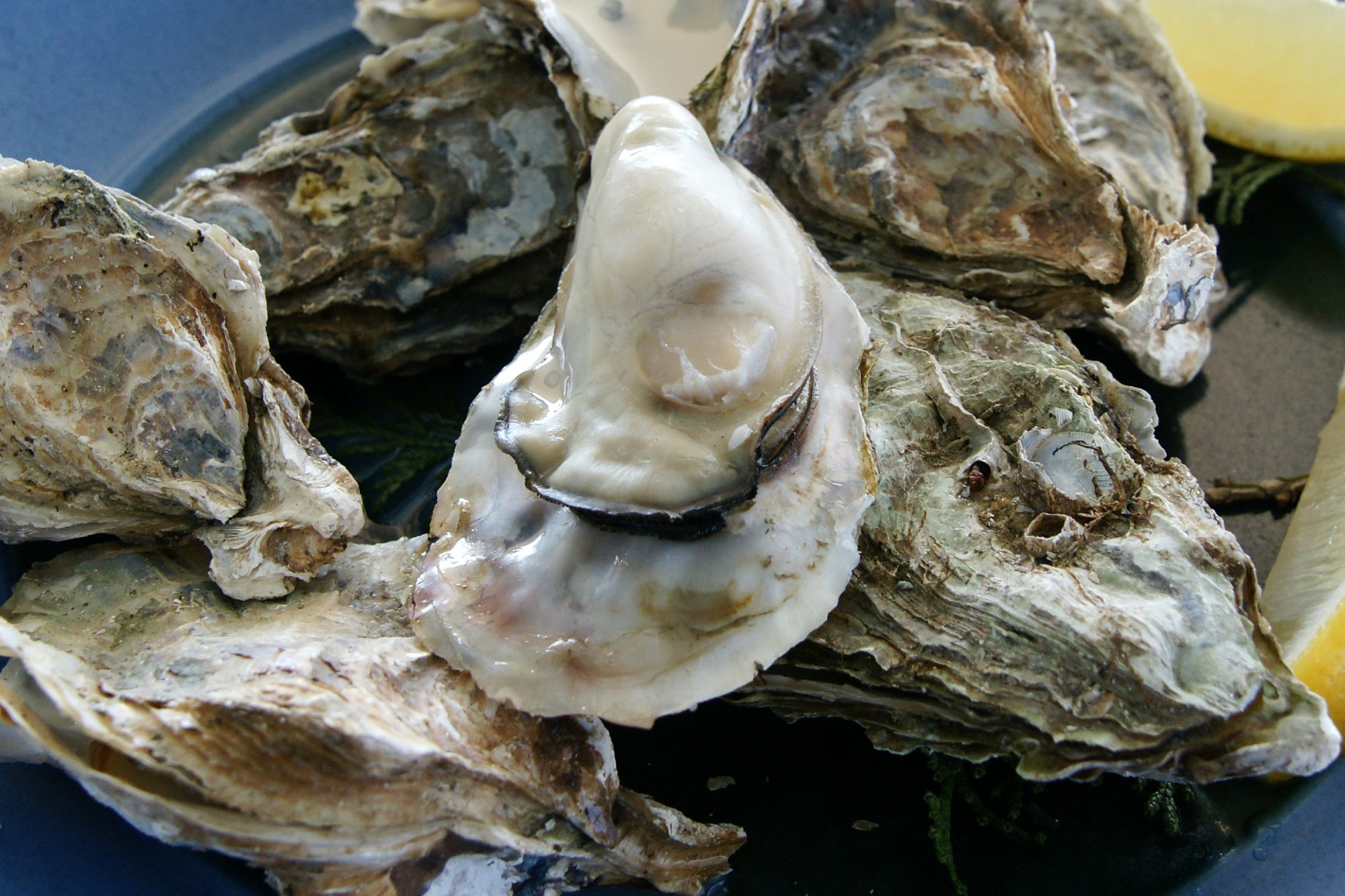And it was fun too! The end result was a nicely crisped chicken, with absolutely spectacular roasted potatoes and carrots (yeah, I caved and added something healthy). I cleverly used duck fat instead of oil, because I have a pint of the stuff from my Thanksgiving multiple-duck-roasting™. Duck fat has a fairly high smoke point, and it adds a bit of flavor. And I think that the cast iron really helped the process; it is so big and heavy that the temperature barely dropped when I put the chicken into the pan.
I dumped some carrots, lemon, celery and onion into the cavity of a 4-pound chicken and then tied the legs together. I couldn’t be bothered with stitching the cavity closed, so I just tucked the skin under the legs and hoped that the stuffing wouldn’t fall out. And don’t forget my creeping pomposity. I used that weird Hawaiian pink sea salt, both in the cavity and on the exterior. I also sprinkled some fresh thyme around, mostly as an afterthought. I used small Yukon Gold potatoes that I had peeled and soaked in cold water for a few hours. I was hoping that the water would leech out some of the starch and help crisp the potatoes, and it seemed to work. The potatoes were too big left whole, so I quartered them, which worked out to be the perfect size. I also peeled and split some carrots and cut them into two-inch pieces. I soaked them in cold water as well, but also added some brown sugar and a bit of salt. Why? I have no idea. But it seemed like a good idea at the time.
The pan was just smoking when I put the chicken in, and the sound of the skin hitting the hot duck fat was lovely. I made sure that the chicken was nice and dry before I dropped it in; I hate getting splattered with hot fat. It browned fairly quickly, maybe two or three minutes on each side. If I make this dish again (and I think I will) I will brown the chicken for a bit longer. As I browned the chicken I heated up a non-stick pan with a pat of butter and some canola oil. When it was hot I tossed in the potatoes and carrots. I wanted to season them (a bit of salt, pepper and thyme) and coat them with fat before I put them into the cast iron pan, mostly to minimize the mess; they filled the pan and it would have been difficult to toss them in the fat. When the chicken was nicely browned, I picked it out of the pan, tossed the potatoes and carrots in, slapped the chicken back into the pan on top of the other stuff, and put it into a 450°F oven for about an hour. I flipped the chicken after 50 minutes, mostly to crisp up the bottom. The potatoes and carrots didn’t stick at all; they just got nice and brown and crispy. The chicken was juicy, but the legs were a tad overdone. Nothing terrible, but the skin had begun to pull away from the ends.
This was enjoyable and amusing to cook, both because I had no idea what I was doing, and the technique was interesting. The best part was the potatoes and carrots. When I try this again I’ll have to spend more than three seconds contemplating the seasoning, but the chicken was worth the trouble.
P.S. I forgot that I deglazed the pan with the stuffing and some red wine (and butter, of course). I then scrunched it through a chinois and made a beautiful sauce. It even tasted good, but it didn’t really go well with the dish. Maybe white wine and lemon would have worked better.

just because you like to flaunt your non-chef status,(lets you off the hook), does not mean you can go shooting from the hip with all sorts of food science nonsense.i suggest Harold McGee’s Kitchen Science, i think that’s it, great book .things like potatoes, water, salt, butter, lemon all have somewhat predictable qualities which allow us to build a dish, to make changes and create things. potatoes, for instance can be starchy, or somewhat sugary. think of a fluffy baked Idaho vs. a boiled new red. so soaking a potato in water to remove starch is nonsense, and if you did succeed,(it would take a lonnnnnng time), your spud would probably fall apart and brown (burn) way to fast. anyway, now that I’ve confused myself…point is, your anti-fussy stance on lots of topics is spot on, way to much BS in the food world. just don’t court anarchy by shunning some basic understanding of the nature and science of cooking. bon appetito
Ouch! In my defense, I have Harold McGee’s book, but he is a real chef, and a scientist too. That’s just not fair. So why do most recipes for French fries suggest soaking the potatoes? I have read many times that the soaking removes some of the starch on the surface, so the fries get crispy. Isn’t that the same idea behind soaking potato chunks?If I want a perfect dish, I will follow a recipe from one of the great cook books. But I don’t want to be a technician in the kitchen; I want to have fun. So winging it and, yes, courting anarchy, sometimes is fun. But you are of course correct. Cooking at its most basic is physics and chemistry, but with an emotional and sensual flair. The problem is that most of us were never chefs, and don’t have the training or talent to be relaxed and creative in the kitchen. So we either slavishly follow a recipe, or we fling caution to the wind (or if we have blogs too, spout off like ninnies). Both are fun!And yes, Bon Appetito!